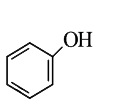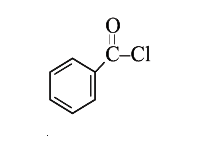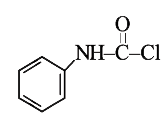Aniline reacts with excess of to form :
The correct Answer is:B
To solve the question regarding the reaction of aniline with excess COCl2 (thionyl chloride) and KOH, we will follow these steps:
1. Identify the Reactants:
- The reactants are aniline (C6H5NH2) and thionyl chloride (COCl2).
- Aniline is a primary amine with the structure C6H5NH2.
2. Reaction with Thionyl Chloride:
- When aniline reacts with thionyl chloride, the amine group (-NH2) will react with the carbonyl group (C=O) of thionyl chloride.
- This reaction leads to the formation of an intermediate compound where the nitrogen atom of aniline forms a bond with the carbon atom of the carbonyl group, resulting in the formation of an acylated amine.
3. Formation of the Intermediate:
- The reaction can be represented as:
\(
C6H5NH2 + COCl2 \rightarrow C6H5NHC(O)Cl
\)
- Here, C6H5NHC(O)Cl is the intermediate formed.
4. Role of KOH:
- The presence of KOH (potassium hydroxide) in the reaction acts as a base. It will deprotonate the acylated amine, leading to the formation of a more stable compound.
- The hydroxide ion (OH-) will abstract a proton from the nitrogen, resulting in a positively charged nitrogen atom.
5. Final Product Formation:
- After deprotonation, the intermediate will rearrange and eliminate a chloride ion (Cl-) due to the presence of KOH.
- The final product can be represented as:
\(
C6H5N=C=O
\)
- This compound is known as an isocyanate.
6. Conclusion:
- The final product formed from the reaction of aniline with excess COCl2 and KOH is benzene isocyanate (C6H5N=C=O).
Final Answer:
The product formed is benzene isocyanate (C6H5N=C=O).
---
- The reactants are aniline (C6H5NH2) and thionyl chloride (COCl2).
- Aniline is a primary amine with the structure C6H5NH2.
- When aniline reacts with thionyl chloride, the amine group (-NH2) will react with the carbonyl group (C=O) of thionyl chloride.
- This reaction leads to the formation of an intermediate compound where the nitrogen atom of aniline forms a bond with the carbon atom of the carbonyl group, resulting in the formation of an acylated amine.
- The reaction can be represented as:
\(
C6H5NH2 + COCl2 \rightarrow C6H5NHC(O)Cl
\)
- Here, C6H5NHC(O)Cl is the intermediate formed.
- The presence of KOH (potassium hydroxide) in the reaction acts as a base. It will deprotonate the acylated amine, leading to the formation of a more stable compound.
- The hydroxide ion (OH-) will abstract a proton from the nitrogen, resulting in a positively charged nitrogen atom.
- After deprotonation, the intermediate will rearrange and eliminate a chloride ion (Cl-) due to the presence of KOH.
- The final product can be represented as:
\(
C6H5N=C=O
\)
- This compound is known as an isocyanate.
- The final product formed from the reaction of aniline with excess COCl2 and KOH is benzene isocyanate (C6H5N=C=O).
The product formed is benzene isocyanate (C6H5N=C=O).
Similar Questions
Knowledge Check
- Question 1 - Select One
Aniline donot reacts with
ABr2 + waterBconc.H2SO4Cconc. H2SO4DCH3−Cl the presence of AlCl3 - Question 2 - Select One
Aniline reacts with excess of phosgene and KOH to form
A B
B C
C D
D
- Question 3 - Select One
Aniline reacts with excess of phosgene and KOH to form :
A B
B C
C D
D

